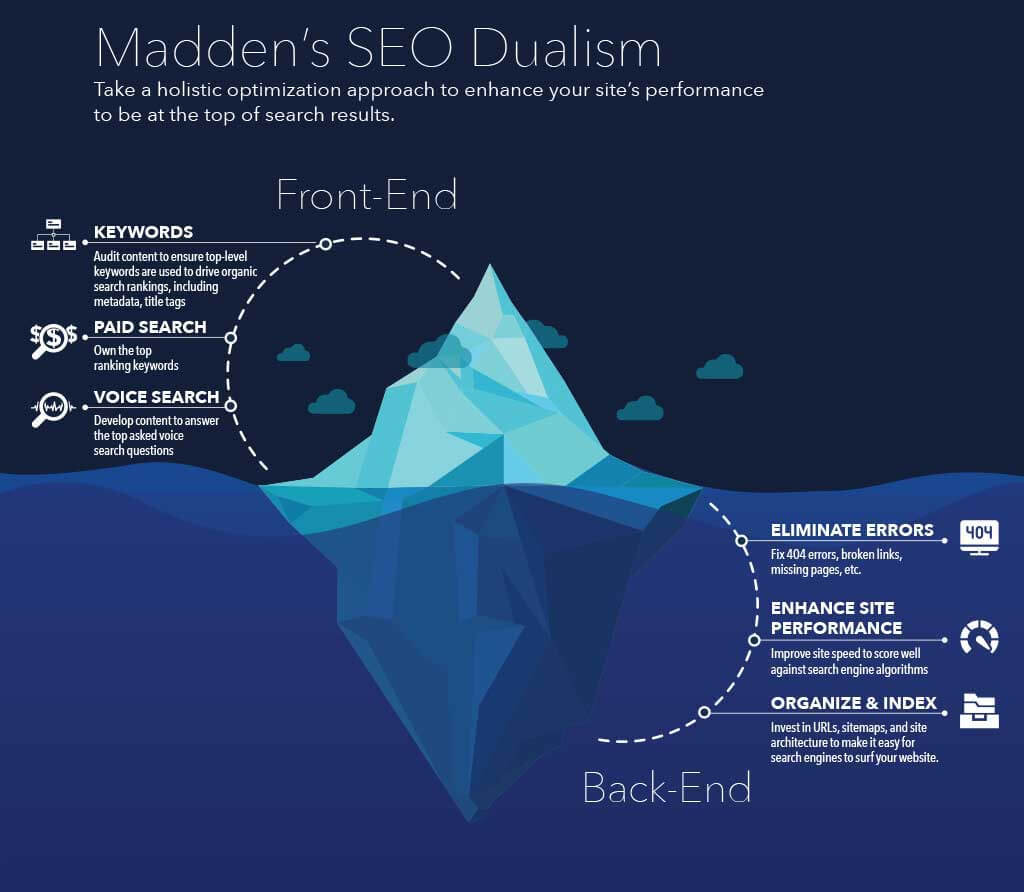Google Algorithm Updates: What You Need to Know
April 20, 2021
Google will update their search engine algorithm beginning in mid-June. Sometimes, the internet giant makes unannounced small tweaks under the hood to their search algorithm. But this time, Google has announced some details and it’s a pretty significant update. We are taking advantage of the heads up and working with our partners to optimize their SEO for the new Google updates.
What’s New in the Google Algorithm?
Google is changing the way they analyze core web vitals, and how they measure them for their algorithm. There are three core web vitals:
- Largest Contentful Paint (LCP)
- First Input Delay (FID)
- Cumulative Layout Shift (CLS)
We will go over each in detail to define each, describe how Google is analyzing each within their algorithm, and provide recommendations to optimize them on your website.
Largest Contentful Paint (LCP)
This measures how long it takes for the largest piece of content to appear on screen. This could be a large video, image, or advertisement. Essentially, it’s a way to define the loading speed of a website. Google defines a good user experience as one where the LCP occurs within two and a half seconds from when the page first starts to load. If the LCP takes longer than four seconds, Google deems it a bad user experience.
Madden recommends caching or resizing images, optimizing images for web loading, and ensuring the images are sized appropriately for the displaying device to improve your LCP. Additionally, double check all CSS and javascript files your site loads are are actually necessary.
First Input Delay (FID)
This measures how long it takes for the site to react to the first user action. This could include clicking on a link or button, but does not include scrolling of changing the browser’s zoom. The FID acts as a measuring stick for a website’s level of interactivity. The Google Algorithm sets parameters for the FID to be less than 100 milliseconds for a good user experience. Anything longer than 300 milliseconds is a bad user experience.
To improve your FID, Madden recommends that loading any non-critical javascript be deferred when possible. Additionally, make sure third-party code is only loaded when necessary.
Cumulative Layout Shift (CLS)
This measures the visual stability of a website. For example, do items move around the screen while it’s loading? The Google Algorithm uses a custom methodology to define CLS, with the benchmark for a good user experience falling at less than 0.1. Anything scoring higher than 0.25 is considered a bad user experience.
To avoid a high CLS, Madden recommends you avoid embedding ads that shift items on a page. Additionally, you should not be inserting content via javascript or inserting iframes. Apply font styles early in the page load to avoid size changes later on. Setting image dimensions for all images is also a great way to reduce any layout shifts.
Why This Matters
Your website’s performance against the Google Algorithm matters for numerous reasons. For better or worse, these are the rules of the road for the internet. Achieving these parameters and scoring well against the algorithm positions your website to appear higher in organic search rankings. Google also requires good core web vitals scores for a website’s content to appear in “Google Top Stories.”
It’s also important to note that Google didn’t just pull these numbers out of the air. Their user experience data shows these core web vitals are necessary for users to remain on a website. Poor page performance has a severe effect on bounce rate. If page load time increases from one second to three seconds, the bounce rate increases 32%. If page load time increases from one second to six seconds, the bounce rate increases 106%.
Read more about the importance of SEO.
Moving Forward
While the recommendations mentioned above will improve your SEO, it’s only one part of a successful SEO strategy. Strong scores in core web vitals are not the only determining factor in performance against the Google Algorithm. They work in tandem with Google’s other user experience ranking factors which include HTTPS, lack of interstitial pop-ups, and mobile-friendliness. The algorithm has over 200 ranking factors, so while core web vitals are important, destinations must have a holistic SEO approach to succeed.

This is why SEO management must be an always-on part of any successful integrated destination marketing strategy. As we mentioned previously, Google doesn’t always announce changes to their algorithm, and destinations can be left flying blind. You can view a list of all the historical updates here to see how often things change.
Remember that SEO is more than just updating metatags or ensuring SEO best practices during website construction. It’s a constant effort to optimize and manage your website for peak performance and Google Algorithm parameters. If you’re not already, you should devote ongoing resources to your website’s SEO to ensure it is in the best position to appear at the top of search results when users are looking for their next trip.



